Our story
Buruli Ulcer Stories Shared by Ryu Su Young, the Honorary Ambassador,
on SBS `Hope TV`
On 30 May, 2014, the visiting story of Ryu Su Young, the honorary ambassador of Miral Welfare Foundation, to Côte d`Ivoire was broadcasted on SBS ‘Hope TV’. SBS ‘Hope TV’ is a social contribution television program that introduces the isolated in the world with a celebrity, promoting a caring culture to the broader audience. The program is collaborating with six other NGO organizations, which perform international cooperative projects.
Miral Welfare Foundation visited children in Côte d`Ivoire who are suffering from Buruli ulcer with SBS `Hope TV` and Ryu Su Young, the honorary ambassador of the organization and offered to help with sponsorship call center service during two days, Friday May 30th and Saturday May 31st.
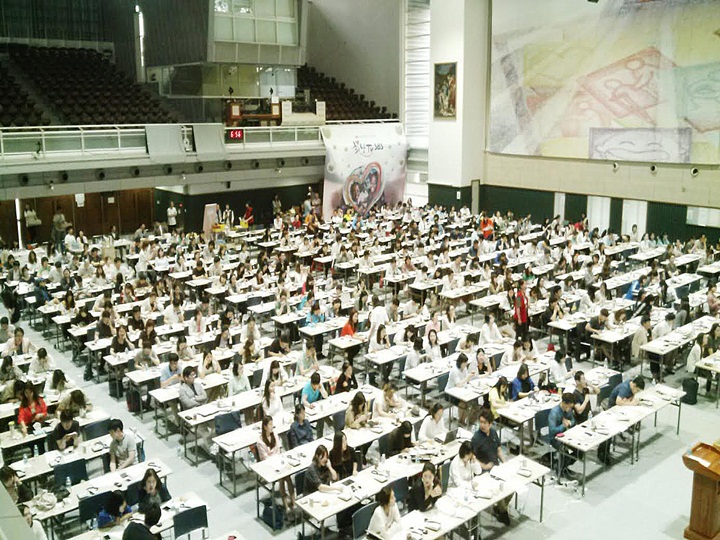
▲ Miral School where SBS 'Hope TV' sponsorship call center service took place in
Buruli ulcer, one of three notorious endemics in West Africa. Buruli ulcer occurs annually with more than 7,000 patients and particularly 41% of the patients lives in Côted`Ivoire. In addition, more than half of the patients are children under the age of 15. Ryu Su Young, the honorary ambassador of Miral Welfare Foundation, went to Sientinfla village in Côte d`Ivoire to find the cause of the Buruli ulcer. This article is to introduce his visiting story to Côte d`Ivoire based on the broadcasting on SBS ‘Hope TV'.
The Poor`s disease, Buruli ulcer
We arrived at Sientinfla village in Côte d`Ivoire after driving on the blowing dust dirt road. A 7-year-old girl, Nicole, was the first one we met. The honorary ambassador Ryu Su Young went closer and greeted gladly her, sitting with her idle attitude under big tree at the vacant land in the village. Nicole said she lives with her grandmother and uncle. Her mother had gone to city to earn money, and she does not have her father. Nicole had her arm wrapped in white cloth. Having suffered for a year from Buruli ulcer, Nicole was getting any treatment because of her family’s financial issues. She was not able to stretch her arms due to her wounds. Neither her family nor Nicole knew what caused the wound, and she said the strongest pain is at night, waking her up from her sleep.
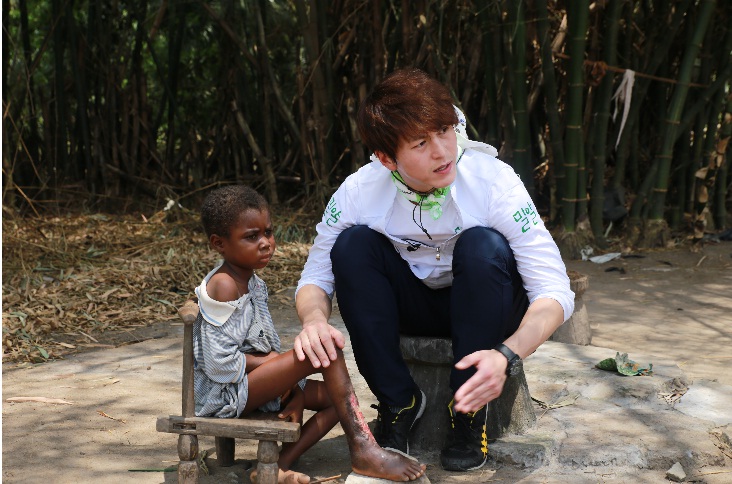
▲ Deborah who shows a serious sign of Buruli ulcer on her right leg
When we went into the deeper part of the village for 30 minutes, we could meet Deborah, a 6 years old girl who was just looking at other children. When Mr. Ryu approached cautiously and sat down by the side of Deborah, she did not show any change in expression such as fear or surprise. When he asked her why she was not playing with her friends and just sitting here lonely, she told him that Buruli ulcer made her right leg unable to move. Her father was deeply saddened by this, so he have seated his daughter where she could see the playground the best. Suddenly Mr. Ryu stopped his hands from untangling the clothes wrapped around the legs to inspect Deborah`s wounds more closely. The cloth was wrapped directly over the wound, causing the blood and pus to be tangled with the clothes themselves. Pus and stink drew flies to her continuously, and he waved his hands, worrying about the possible additional infection.
Neglected children
The villagers were treating Buruli ulcers by the traditional way : after buying the expensive local tree leaves for the price of two chicken, they boiled and grinded the leaves to place it on the wound and wrap it with a cloth. It is unfortunate that it was only the rumor that claims its effectiveness, and there is no case that these traditional methods seemed to work.
Rather, secondary infection would more likely to occur and cause more serious situation. Deborah`s father had known that she should go to the hospital, but it is practically impossible to leave his daily work at a cocoa farm to go to the hospital. Ambassador Ryu Su Young said that if this child is left untreated, her legs may begone by the time we come back and he tears in sadness.
We moved to the health center with the children. The town`s only public health center, run by a nurse without a doctor, was in charge of taking care of 21,500 people in 28 villages. The health center confirmed that children`s disease is indeed Buruli ulcer, caused by the water fleas living in polluted water and infecting people in arms, legs and skin. The infection destroys skins and texture and develops to large ulcers. It is possible to treat it in the early stage if a patient takes the most effective antibiotics as Rifampicin and Streptomycin for 56 days, but the patient would die from the infection or be forced to sever the infected body parts without an early treatment. However, the health center can only disinfect, and patients had to go a couple of hours by car to go to a big hospital to receive a proper treatment.
Resounding song of Buruli
The next day we went to the village school that the children attended. They were studying hard in two classrooms made of wood and straw. We asked them to raise their hands if they have any wounds on the arms and legs to see if there were other patients with Buruli ulcer, and we found more than a third of the class(30 people) raising their hands. We asked them where they could be bitten by water flea, and they responded that, there is a pond for farming near the school and they had been bitten when they were playing in there. We went with the kids to the reservoir, a stagnant one without any water flow, and the children said that they had been in the reservoir to catch fish. Some adults also went into the reservoir in order to obtain agricultural water, got bitten by the water flea, and have been suffering from Buruli ulcer.
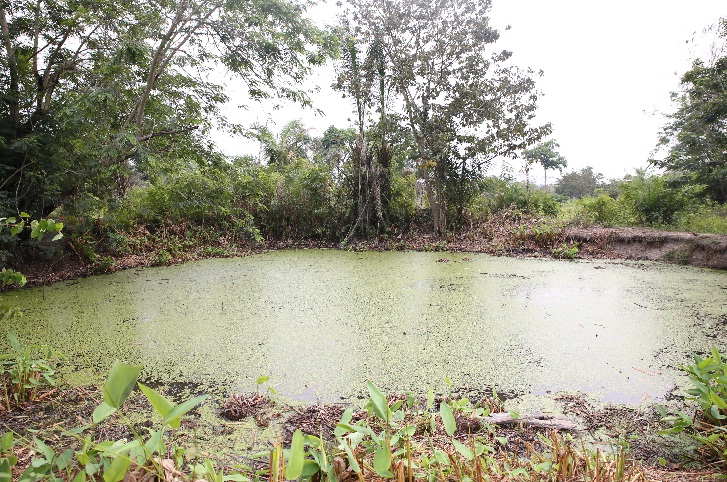
▲ Reservoir in Sientinfla village, a source of water fleas that could caue Buruli ulcer
Ambassador Ryu Su Young had thoughts to teach the children to realize why they are suffering from Buruli ulcer. He said he would make a simple song to enlighten and educate the children. The next day we went back to school, and he explained how Buruli ulcers is caused and what it is with the song. "To avoid the disease, do not go in dirty water, cleanse the body, and go to the hospital" said Mr. Ryu and taught them how to prevent the disease.
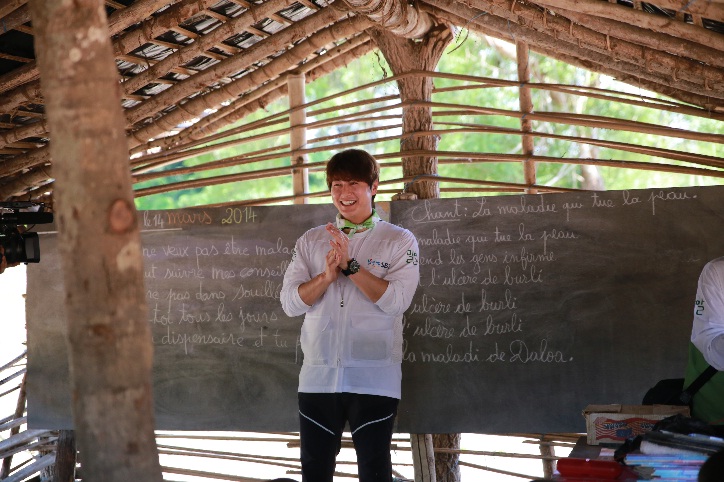
▲ Ambassador Ryu Su Young, teaching a song to educate children how to prevent Buruli ulcer
The next day, we left Sientinfla village by car and drove for three hours to a large hospital. There was treating for Buruli ulcer in the hospital, and the children were screaming from pain and begging to spare them when the bandage was detached from the wound. Ryu Su Young hugged the child`s shoulder and pleaded, "just a little bit more to endure... Come on ...," with all sincerity. After their visit, Nicole and Deborah have been hospitalized and treated starting on April 8th. The 30 school children who raised hands up at school were moved to the hospital to be determined whether they have Buruli ulcer. Amongst those, the ones in need of treatment will be admitted to the hospital. Local hospitals in Bouaké and the health centers in Sientinfla village decided to work together to educate the dispatched medical staff and provide sufficient medicine and nutrition to children in the early stage of the disease. Miral Welfare Foundation will do our best so no more children will be sick without knowing the cause and will improve our healthcare projects.
We really appreciate with all of you with donation through SBS ‘Hope TV’ for children who are suffering from Buruli ulcer.
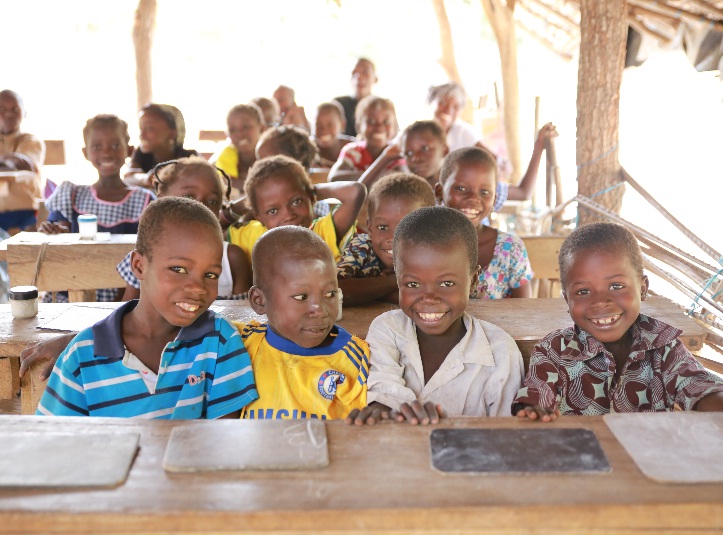
▲ Children, studying in their local school